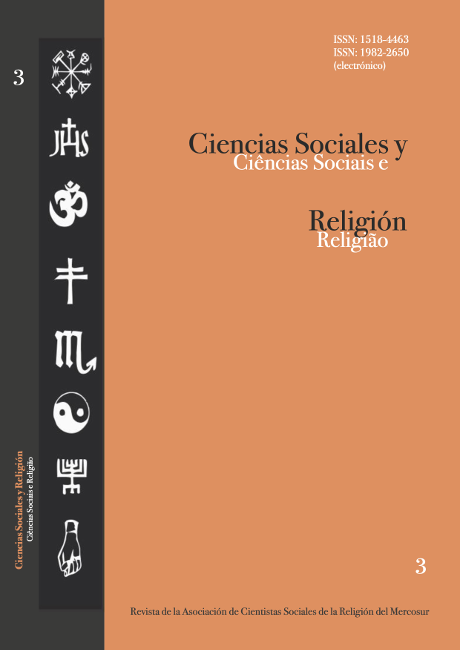Abstract
The connection between war and religion in contemporary society comes about, roughly speaking, through the consecration of an ethnic identity, which is a veritable process of social construction of a given collective identity. Human groups (peoples, nations, minorities, tribes, religious movements etc. and their leaders or political ‘entrepreneurs’) tend to mobilise the following main symbolic resources: a) the holy scripture of the collective memory; b) the transformation of a given land - in which the group claim to have their historical origins - into a Holy Land; c) the identification of an Enemy, at the same time both real and symbolic, viewed and emotively experienced as the Antithesis, the Evil One, responsible for all the evils and frustrations which afflict the social group. Thus defined, the ethnic identity takes on the appearance of the Pure against the Impure. Hence, the idea of resorting to holy violence is legitimized. Religions go to war when the right historical circumstances occur: when ethnos and political ambitions come together. Without the latter - i.e. without the autonomy of politics - the resurgence of religious wars and the involvement of religions in contemporary wars could not be explained.
References
ALLEN, David. 1992 (org.). Religion and Political Conflict in South Asia. Westport: Greenwood Press.
BOGDANOVIC, Dragolijub. 1991. “Pravoslava duhovnost u iskusenjima naseg doba”. Godina n. 10-12: 28-39.
COLEMAN, James. 1956. “Social Cleavages and Religious Conflicts”. The Journal of Social Issues n. 12: 1-16.
DOUGLAS, Mary. 1966. Purity and Danger. London: Routledge and Kegan.
FRIEDMAN, Menachem. 1992. Zealots of Zion. New York: Random House.
GREILSAMMER, Ilan. 1991. Israel: les hommes en noir. Paris: PFNSP.
GUOLO, Renzo. 1997. Terra e redenzione. Milano: Guerini.
HERVIEU-LEGER, Danièle. 1993. La religion pour mémoire. Paris: Cerf.
JAFFRELOT, Christian. 1993. Les nationalistes hindous. Paris: PFNSP.
KUZAMNIC, Tonci. 1992. “Yugoslavia: una guerra di religione?”. Religioni e società n.14: 107-122.
MADAN, Triloki Nat. 1991 (org.). Religion in India. Delhi: Oxford Univ. Press.
MAHMUTCEHAJIC, Rado. 1990. “Bosnjaci i/ili Muslim?” Gradinan. 28-29: 412-425.
OMVEDT, Gail. 1992. “Hinduism, Social Inequality and the State”. In: ALLEN, D. (org.). Religion and Political Conflict in South Asia. Westport: Greenwood Press.
PACE, Enzo. 1998. Il regime della verità. Bologna: Il Mulino.
PAIC, Georgjievic. 1991. “Sprska pravoslavna Crkva i Kriza”. Gradina n.26: 158-169.
PIANO, Stefano. 1996. “Il ne-hindusmo”. In: FILORAMO, G. (org.). Storia delle religioni. Roma: Laterza, pp. 195-208.
ROBERTSON, Ronald, GARETT, Walter. 1991 (orgs.). Religion and Global Order. New York: Paragon.
SAGI-BUNIC, T. 1983. Katoloka crkva i hrvatski narod. Zagreb: Krcanska.
SIDHWA, Bapsi. 1991. Craking India. Minneapolis: Melkweed.
TULLIO-ALTAN, Carlo. 1995. Ethnos e civiltà. Milano: Feltrinelli.
VRCAN, Sdrjan. 1994. “Una guerra di religione in Europa contemporanea”. Religioni e società n. 18: 16-26.

This work is licensed under a Creative Commons Attribution-NonCommercial-ShareAlike 4.0 International License.
Copyright (c) 2001 Enzo Pace
